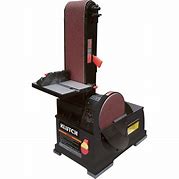Are you planning to buy a sander for the first time? If so, you ought to know that there are several factors to ponder before you can choose the right variety. Yes, there are a handful of different models and variants, and while most of them offer similar functionality, the little attributes can dictate whether you bought the right one or not.
When you are looking forward to investing in a disc sander – AdelaideTools.com.au, need to understand your needs first. Figure out how you plan or intend to use it. Are you looking forward to calibrating your parts or you merely plan to sand the surface? Are you hoping to achieve a specific surface finish or target a stock removal? Those are the type of questions you must answer to ensure you have the right sanding machine. You never should start searching for prospects if you haven’t even considered how you plan on using the tool. If you are not sure or clueless about your specific needs, the best approach is to get the assistance of a sales representative.
 Keep in mind that sanders come in different configurations, price, shapes, and sizes. Since it is your first time shopping for a disc sander – AdelaideTools.com.au, you might find it overwhelming by merely looking at the prospects. If you heed our advice in asking for assistance from a sales representative, then you will know that identifying the correct machine means giving weight to factors like duty cycle, head type, the width of the tool, and of course, your budget.
Keep in mind that sanders come in different configurations, price, shapes, and sizes. Since it is your first time shopping for a disc sander – AdelaideTools.com.au, you might find it overwhelming by merely looking at the prospects. If you heed our advice in asking for assistance from a sales representative, then you will know that identifying the correct machine means giving weight to factors like duty cycle, head type, the width of the tool, and of course, your budget.
There are four primary head types for sanding machines, namely knife or planer, wide belt, brush, and orbital. The ones with knife planers are considered as the conventional type that uses a metal roller with knife edges designed to shave-off large pieces of material. You choose the knife planer when your work requires rapid stock removal, although you must acknowledge that it may leave an uneven finish. Meanwhile, the straight scratch in a head type with a wide belt may sometimes be hard to see when in line with the grain. On the other hand, the orbital head is useful for removing linear cross-grain scratches with the help of a wide platen. A brush head is the best option for breaking sharp edges and when it comes to evening out surfaces for consistency.
Finally, you should learn your options when it comes to the abrasive of the sander. The role of the abrasive material is crucial because it is the one that does the hard work. The sander’s job is to merely back it up. It is, therefore, a necessity to investigate the abrasive used in the tool about your specific needs or application for the sander.



